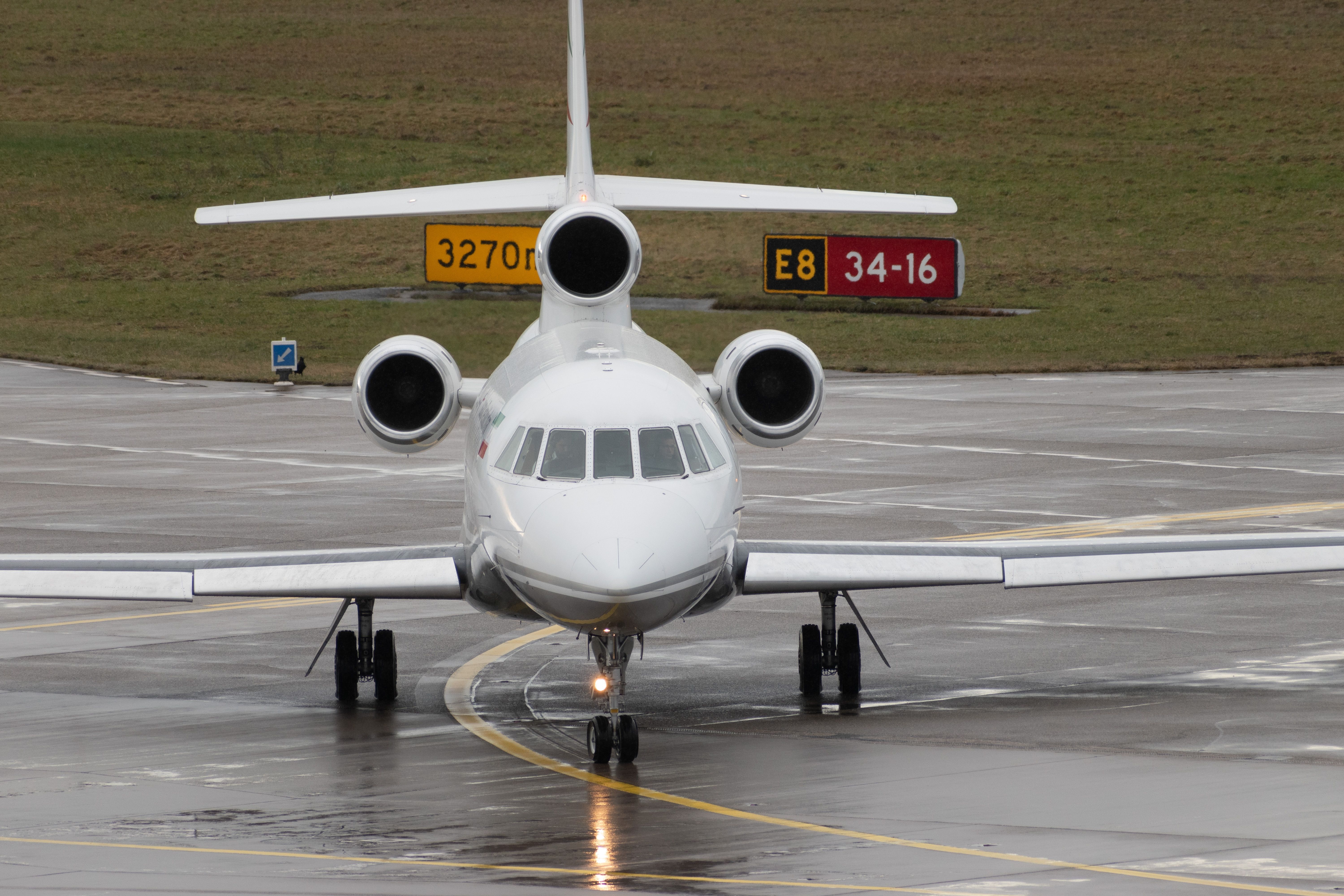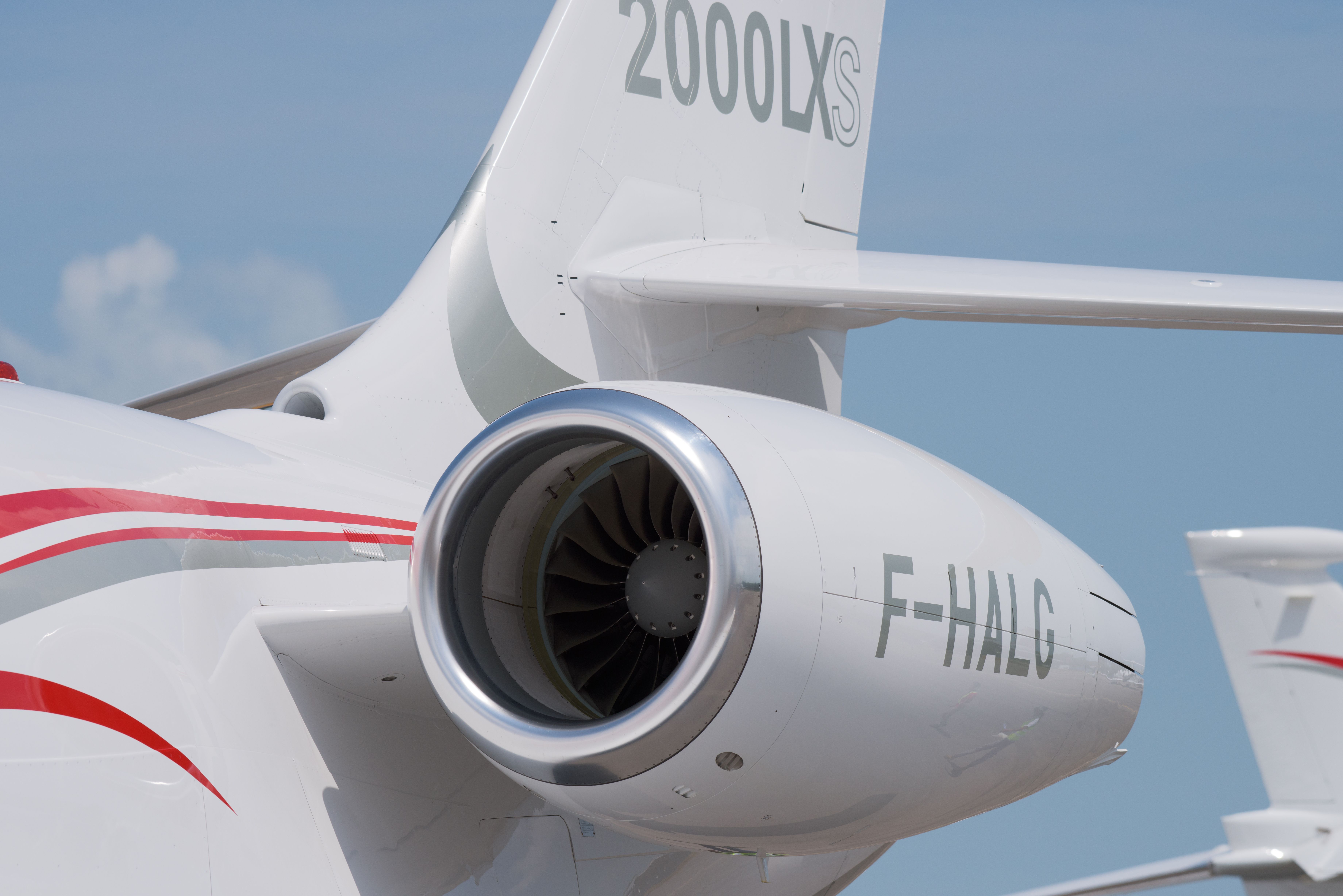Among all the private jets
currently flying in our skies, the Dassault Falcon business jet family might be the most striking, with a unique three-engine configuration and a list of different variants. The aircraft family, produced by French manufacturer Dassault Aviation, has consistently rolled off the planemaker’s assembly lines since 1963, when the first Dassault Falcon 20 came out of the factory, according to Aviation Week.
Over time, the family has been expanded with multiple new variants, all of which are meant to serve a unique niche within the market, from customers looking for intercontinental business jets to those looking simply for a midsize domestic private plane. Today, three different variants remain in production, and they are as follows:
- Falcon 2000S/LXS, a mid-size twin-engine variant
- Falcon 900LX, a long-range heavy trijet
- Falcon 7X/8X, an ultra-long-range three-engine aircraft
By 2009, the family had achieved impressive long-term success, with the 2,000th Falcon delivered to a customer in 2009. One of the many variants that has contributed heavily to the aircraft’s long-term success is the first of these three variants that remains in production today.
With a sleek twin-engine configuration, the Falcon 2000 stands out from its family members and is smaller than many of the other variants. Designed to compete more effectively against midsize offerings from rival private jet manufacturers like Gulfstream and Bombardier, the Falcon 2000 has been one of the manufacturer’s largest commercial successes, with over 675 delivered to customers. Let’s take a deeper look at this unique business jet and explore everything it brings to the table.
Development, origins, and entry to service
The story of the Dassault Falcon 2000 begins decades prior when the aircraft manufacturer began to build its first jet in the Falcon family, the Falcon 20. Designed with low wings and only a pair of turbofan engines, the midsize private jet was designed to be a next-generation solution for personal and organizational air mobility. According to FlightGlobal, over 500 were produced, many of which entered service with global military organizations and private defense operators like Draken International.
The Falcon 20 would later be developed into the Falcon 50, which added a third engine giving the family its unmistakable trijet configuration. Despite being larger than its predecessor and offering an extended range and higher passenger capacity, the Falcon 50 was not as successful as the Falcon 20, with only around 350 being sold during a 32-year production run from 1976 to 2008.
The Falcon 900 would be the next development in the family and would improve upon its predecessors in several ways. Despite sticking with what may be considered a slightly inefficient three-engine configuration, the Falcon 900 utilizes composite materials, which offer efficiency improvements as they are significantly lighter.
Photo: Robert Buchel | Shutterstock
Multiple models of the Falcon 900 were produced, including the extended range 900-B, the ultra-extended range 900EX, the 900C which featured an all-glass flight deck, and the 900DX. The latest variant in the series, the 900LX, was announced at the European Business Aviation Convention & Exposition in 2008, an aircraft that would go on to incorporate winglets designed to support higher-speed flight.
A need for a smaller variant
Eventually, it became clear that operators were interested in a smaller corporate aircraft that was more efficient and easier to operate. Hence, engineers at the French manufacturer sought to build the Falcon 2000, a smaller version of the Falcon 900 that would offer a lower range in exchange for higher efficiency and lower fuel consumption, alongside a lower purchase price.
Photo: Thor Jorgen Udvang | Shutterstock
To build the smaller aircraft, Dassault shortened the Falcon 900 fuselage by around seven feet, and the company designed a luxurious cabin that would be able to accommodate up to 10 passengers. The aircraft’s frame was mostly unaltered but some adjustments were made to the control surfaces, with the leading wing edge’s inboard slats being fully removed. Here are some specifications for the unique and dynamic aircraft:
|
Category |
Dassault Falcon 2000 Specification |
|---|---|
|
Maximum Speed |
Mach 0.85 |
|
Range |
4,000 nautical miles (at Mach 0.8) |
|
Service Ceiling |
14,326 meters |
|
Take-off distance |
4,675 feet |
With these specifications, the manufacturer was able to introduce an aircraft to the market that matched the comfort of larger Dassault Falcon variants, but without the higher costs associated with operating a larger aircraft. For those who are unconcerned about the aircraft’s lower range, the Dassault Falcon 2000 can be a very appealing option.
Multiple variants were produced
The popular aircraft’s original variant was first certified in 1994, featuring CFE engines and a Collins Pro Line 4 next-generation integrated flight deck. The plane would later be produced in many different variants, including the following:
- Falcon 2000EX: Offers an extended range
- Falcon 2000EASy: Variant that featured pressurization and oxygen system changes, alongside new avionics
- Falcon 2000DX: Updated model with new Pratt & Whitney engines
- Falcon 2000LX: Introduced blended winglets that supported more efficient high-speed flight
- Falcon 2000X: Reduced landing distance significantly, at the cost of slightly lower range
- Falcon 2000LXS: Replaced the 2000LX and offered better performance and cabin comfort
- Falcon 2000MRA/MSA: This Marine Reconnaissance Aircraft (MRA) or Maritime Surveillance Aircraft (MSA) is extensively used by the Japanese Coast Guard
- Falcon 2000 Albatross: Specially configured aircraft for the French Navy
These extensive modifications and customizations have been key factors contributing to the Falcon 2000’s long-term commercial success. With over 600 built today, it is important to keep in mind that the aircraft remains in production and will likely be a formidable force in the mid-size jet market for years to come.



